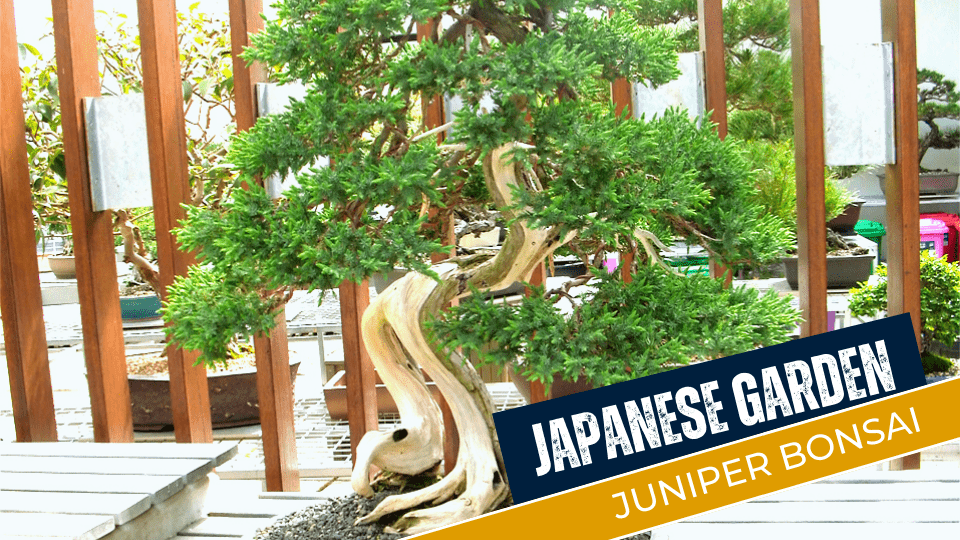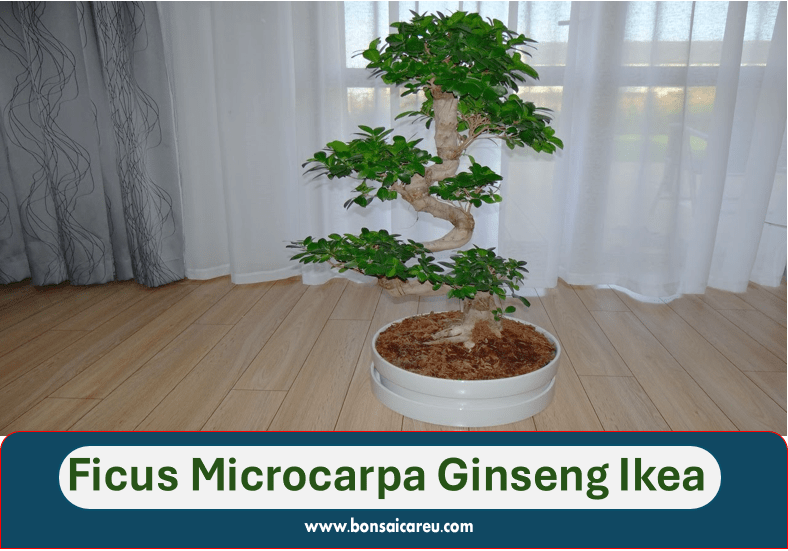Japanese Garden Juniper Bonsai is a small, ornamental tree popular for its unique, twisted trunk and lush green foliage. It is a versatile and low-maintenance plant that adds a touch of tranquility and elegance to any garden or indoor space.
The bonsai’s compact size makes it ideal for small living spaces, and its resilience allows it to thrive in various climates. Whether used as a decorative accent or a focal point, the Japanese Garden Juniper Bonsai is a timeless and captivating addition to any landscape.
With proper care and maintenance, this bonsai can bring its surroundings years of natural beauty and serenity.

Japanese Garden Juniper Bonsai
Discover the serene beauty of Japanese Garden Juniper Bonsai, a symbol of tranquility and harmony. This exquisite bonsai variety embodies elegance and a minimalist aesthetic, perfect for creating a peaceful oasis in any space.
Roots In Tradition
Japanese Garden Juniper Bonsai has a deep-rooted connection with Japanese culture, dating back to the 14th century. It is a living art form that embodies simplicity, harmony, and balance. Bonsai cultivation is a highly regarded practice in Japan and has been handed down from generation to generation. The Japanese have a deep respect for nature, and this is reflected in their gardening style. The art of Bonsai is an extension of this philosophy, and it is considered a way to connect with nature on a deeper level.
Symbolism And Aesthetics
Japanese Garden Juniper Bonsai is more than just a beautiful tree. It symbolizes Japanese culture, and every aspect of the tree has a symbolic meaning. For example, the twisted trunk represents life’s journey, the branches symbolize growth, and the leaves represent the natural beauty of life. Japanese Garden Juniper Bonsai is also aesthetically pleasing, with its unique shape and texture.
It is a masterpiece that requires patience, skill, and dedication to create. In conclusion, Japanese Garden Juniper Bonsai is a living work of art rooted in tradition and full of symbolism and aesthetics. It represents Japanese culture and philosophy and a way to connect with nature on a deeper level. The art of Bonsai is a unique and rewarding experience that requires patience and dedication.
Selecting The Right Juniper Specimen
When selecting the right juniper specimen for your bonsai, it’s essential to consider several factors that contribute to the health and aesthetic appeal of the plant. By understanding the traits of a healthy juniper and the varieties best suited for bonsai cultivation, you can make an informed choice that will set the foundation for a thriving Japanese Garden Juniper Bonsai.
Traits Of A Healthy Juniper
- Compact and vibrant foliage
- Flexible branches with a natural curve
- Well-defined trunk with a tapered shape
- Strong, well-established root system
Varieties Suited For Bonsai
Several juniper varieties are particularly well-suited for bonsai cultivation due to their inherent characteristics. Some popular choices include:
| Variety | Description |
|---|---|
| Juniperus procumbens ‘Nana’ | A slow-growing, compact variety with dense foliage |
| Juniperus chinensis ‘Shimpaku’ | Known for its fine, textured foliage and elegant, twisting branches |
| Juniperus squamata ‘Blue Star’ | Characterized by its striking blue-green foliage and naturally low, spreading growth habit |
Crafting Your Bonsai: Essential Techniques
Discover the art of crafting a Japanese Garden Juniper Bonsai with essential techniques. Learn how to shape, prune, and care for your bonsai masterpiece. Embrace the meditative practice of bonsai cultivation for a serene and harmonious living space.
Japanese Garden Juniper Bonsai requires specific techniques for shaping and structure.
Pruning For Shape And Structure
Prune branches to maintain the desired shape and encourage growth.
Wiring For Precision
Use wiring to guide branches into desired positions gently. Trim roots to prevent overcrowding in the pot. Water your Bonsai carefully to avoid overwatering. Position your Bonsai where it can receive adequate sunlight. Repot your Bonsai every two years for optimal growth. Use quality soil to provide essential nutrients for your Bonsai. Choose suitable Bonsai tools for precise pruning and wiring. Do not prune or wire your Bonsai during its dormant period.
Caring For Your Juniper Bonsai
Proper care is essential for maintaining the health and beauty of your Japanese Garden Juniper Bonsai. By following a few guidelines, you can ensure that your bonsai thrives and continues to bring joy for years to come.
Watering Schedule
Establishing a regular watering schedule is crucial for the well-being of your Juniper Bonsai. It is recommended to water the bonsai when the topsoil feels slightly dry to the touch.
During hot summer months, your bonsai may require more frequent watering to prevent the soil from drying out completely. On the other hand, during cooler months, you can reduce the frequency of watering to avoid over-saturation.
Soil And Fertilization
The soil composition plays a significant role in the growth and development of your Juniper Bonsai. It is recommended to use a well-draining bonsai soil mix to prevent waterlogged roots.
In terms of fertilization, a balanced liquid fertilizer specifically formulated for bonsai trees can be applied every two weeks during the growing season. However, it is crucial to follow the instructions provided by the manufacturer to avoid over-fertilization, which can harm the bonsai.
Sunlight And Temperature Requirements
Juniper Bonsai thrives in bright, indirect sunlight. It is important to place your bonsai in a location where it can receive at least 4-6 hours of sunlight each day. However, direct sunlight during the hottest part of the day should be avoided to prevent leaf burn.
When it comes to temperature, Juniper Bonsai is adaptable and can tolerate a wide range of temperatures. However, it is best to keep your bonsai in a location where the temperature remains between 60°F (15°C) and 75°F (24°C) for optimal growth.
By following these simple guidelines for watering, soil, and fertilization, as well as sunlight and temperature requirements, you can ensure that your Japanese Garden Juniper Bonsai thrives and remains a stunning centerpiece of your garden.
Outdoor Bonsai Trees for Beginners: Easy Care Tips
Common Challenges And Solutions
Pest Control
Regularly inspect the bonsai for pests such as aphids and spider mites. Use a gentle spray of water to dislodge pests and insecticidal soap for severe infestations.
Disease Prevention
Ensure proper air circulation and avoid overwatering to prevent fungal diseases. Prune the bonsai to maintain its shape and remove any dead or diseased branches.
Addressing Yellowing Needles
Check the soil moisture and adjust watering to avoid both overwatering and underwatering, which can cause needle yellowing. Ensure the bonsai receives adequate sunlight and proper nutrition.
Incorporating The Bonsai Into Your Space
Enhance your space with the captivating charm of a Japanese Garden Juniper Bonsai. This exquisite addition brings a touch of nature’s tranquility, creating a serene and elegant atmosphere in any room.
Designing A Peaceful Display
Incorporating a Japanese Garden Juniper Bonsai into your space can bring a sense of tranquility and beauty. Designing a peaceful display for your bonsai requires careful consideration of its placement and surrounding elements. By following a few key principles, you can create a harmonious environment that showcases the natural elegance of your bonsai.
Complementary Plants And Elements
To enhance the beauty of your Japanese Garden Juniper Bonsai, it’s important to choose complementary plants and elements that create a cohesive and balanced display. Selecting plants that thrive in similar conditions to your bonsai, such as mosses, ferns, or small flowering plants, can add depth and texture to the overall arrangement. Consider incorporating elements like rocks, pebbles, or a miniature water feature to mimic the serene landscapes often found in Japanese gardens.
These elements not only enhance the visual appeal but also create a sense of tranquility and harmony. Remember to keep the scale and proportion in mind when selecting complementary plants and elements. The size and shape of your bonsai should be complemented by the surrounding elements, creating a visually pleasing composition. Creating a peaceful display for your Japanese Garden Juniper Bonsai involves thoughtful placement and selection of complementary plants and elements. By adhering to these principles, you can transform your space into a serene oasis that showcases the natural beauty of your bonsai.
Frequently Asked Questions
Is A Japanese Garden Juniper A Bonsai Tree?
Yes, a Japanese garden juniper can be trained as a bonsai tree. It is a popular choice for bonsai enthusiasts due to its small size and beautiful foliage.
How To Care For A Japanese Garden Juniper?
To care for a Japanese garden juniper: 1. Water regularly, keeping the soil moist but not waterlogged. 2. Provide well-draining soil and avoid over-fertilizing. 3. Prune the juniper in late winter or early spring to maintain its shape. 4. Protect it from harsh winter conditions and strong winds.
5. Monitor for pests and treat accordingly.
Can A Japanese Juniper Bonsai Grow Indoors?
Yes, a Japanese juniper bonsai can thrive indoors with proper care, adequate sunlight, and regular pruning.
How To Care For A Japanese Juniper Bonsai Tree?
To care for a Japanese juniper bonsai tree, place it in a sunny spot, water when the soil feels dry, and fertilize monthly during the growing season. Trim and shape the tree regularly and repot it every few years to maintain its health.
How Often Should I Water My Japanese Garden Juniper Bonsai?
Water your bonsai when the soil feels slightly dry to the touch. Check daily.
How Much Sunlight Does A Japanese Garden Juniper Bonsai Need?
Juniper bonsais need plenty of sunlight, ideally 4-6 hours of direct sunlight per day.
Conclusion
Incorporating a Japanese Garden Juniper Bonsai adds tranquility and beauty to any space. Its symbolic significance and low-maintenance nature make it a popular choice for both beginners and experienced enthusiasts. With proper care and attention, this bonsai can thrive and bring a touch of Zen to your surroundings.


